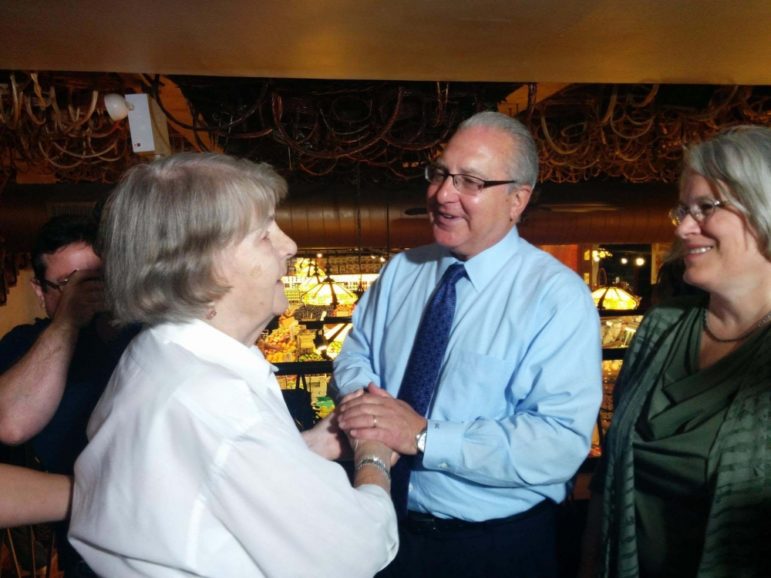
NYS Assembly
The Elder Rental Assistance Program (ERAP), proposed by Assembly Member Steven Cymbrowitz, would provide rental assistance to low-income seniors who pay more than 30 percent of their income in rent.
Ms. S. is a 77-year-old Holocaust survivor and a New Yorker. She’s one of the tens of thousands of seniors in the city who worked hard for decades but now struggle to make ends meet as rising costs of living eat away at savings. Ms. S.’s monthly income is around $1,300, mostly in Social Security payments and food stamps—and every month she runs out of money trying to cover rent, groceries, utilities, medical care, and other household expenses.
Ms. S.’s problems should have been over when she found and enrolled in the city’s underutilized Senior Citizen Rent Increase Exemption (SCRIE) program, which freezes rents for residents of rent-regulated apartments who are over the age of 62, have an annual income of $50,000 or less, and pay more than one-third of their income in rent. But because her rent was frozen at $961, the level it was when she enrolled—which amounted to more than 70 percent of her income—and not reduced to the level at which she would be eligible, she was out of luck.
New York must devote the resources necessary to ensure its fast-growing senior population can afford rent without making dangerous tradeoffs that impact health and safety, and to prevent emergency room visits and homeless shelter stays. In its current form, SCRIE—one of the only programs that directly addresses rents for seniors—does not solve the root problem of housing cost burden because it freezes rents upon enrollment, and paying more than one can afford in rent is a requirement for eligibility. Further, it does not take into account the ways rent burdens may increase over time, such as declining incomes as people age, loss of a spouse or partner, or waning retirement savings. Additionally, since participants are locked into their rent at the time of enrollment, people pay widely different proportions of their income on rent, based on nothing except when they happened to learn about the program.
Almost one third of SCRIE participants pay 70 percent or more of their income on rent like Ms. S, and the average annual income of a SCRIE household is less than $17,000. Among those who pay more than half their income on rent, the average amount left over to spend on other necessities each month is just $183. This incredible rent burden causes many seniors to skip meals, miss doctor appointments, or let prescriptions go unfilled, all of which put their health in jeopardy.
A realistic solution from the New York State Assembly could bring much-needed relief to the thousands of seniors caught in SCRIE’s Catch-22. The Elder Rental Assistance Program (ERAP), proposed by Assembly Member Steven Cymbrowitz, would provide rental assistance to low-income seniors who pay more than 30 percent of their income in rent. One way to fund the program is through the much-discussed “mansion tax,” a proposed 2.5 percent transfer tax paid by the buyer on high-end residential real estate transactions. The mansion tax is estimated to raise approximately $338 million in 2018 alone—all of which would help struggling seniors remain in their homes and in their neighborhoods. If agreement isn’t reached on the mansion tax, the state should allocate a portion of the billions of dollars in settlement funds for affordable housing it received from major banks to directly assist seniors through ERAP.
The benefits ERAP would bring to rent-burdened seniors are clear: research has shown that affordable housing for seniors leads to increased spending on food and preventative healthcare. But keeping seniors in their home also saves public money. It costs the city $61,740 a year to shelter the members of an elderly household. And the city’s Assigned Counsel Project, which provides legal services in housing court to 10,000 low-to-moderate-income seniors who are facing eviction, costs an estimated $20 million each year. These costs and more could be lowered or avoided altogether by preventing vulnerable seniors from succumbing to high rent burdens in the first place.
Without intervention, this problem will only get worse, especially as New York’s senior population is expected to grow 40 percent by 2040. The state should do its part to ensure that every senior has access to a safe, accessible, and affordable place to call home—without having to sacrifice health or quality of life in the process. ERAP is a smart, financially sound way to address the struggles of thousands of seniors and protect them for years to come. New York State legislators must make it a priority.
Judi Kende is vice president and New York market leader at Enterprise Community Partners. Fr. Michael J Callaghan, c.o. is executive director of Nazareth Housing.









3 thoughts on “CityViews: Rent-Burdened Seniors Deserve Better from NY State”
We have a senior client who will need to move — in her case she lived with a roommate — the rent was frozen at 30% of their combined income — last month her roommate died. Her rent (with SCRIE) is more than her income.
Sally: SCRIE can refreeze a rent at a lower amount if there is a substantial change in income (20%) such as in this case. May be enough to keep your client in their home. There is a request for redetermination form with NYC finance.
http://www1.nyc.gov/site/rentfreeze/tools/scrie-applications.page
Seniors that live in non-regulated apartments also need help with rent.